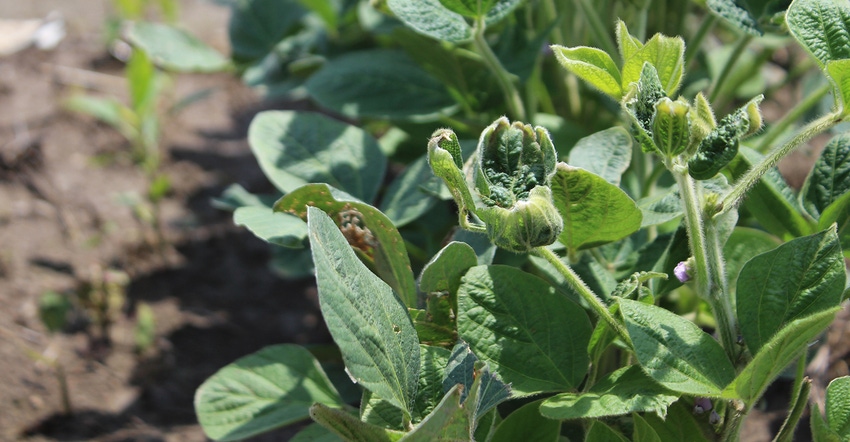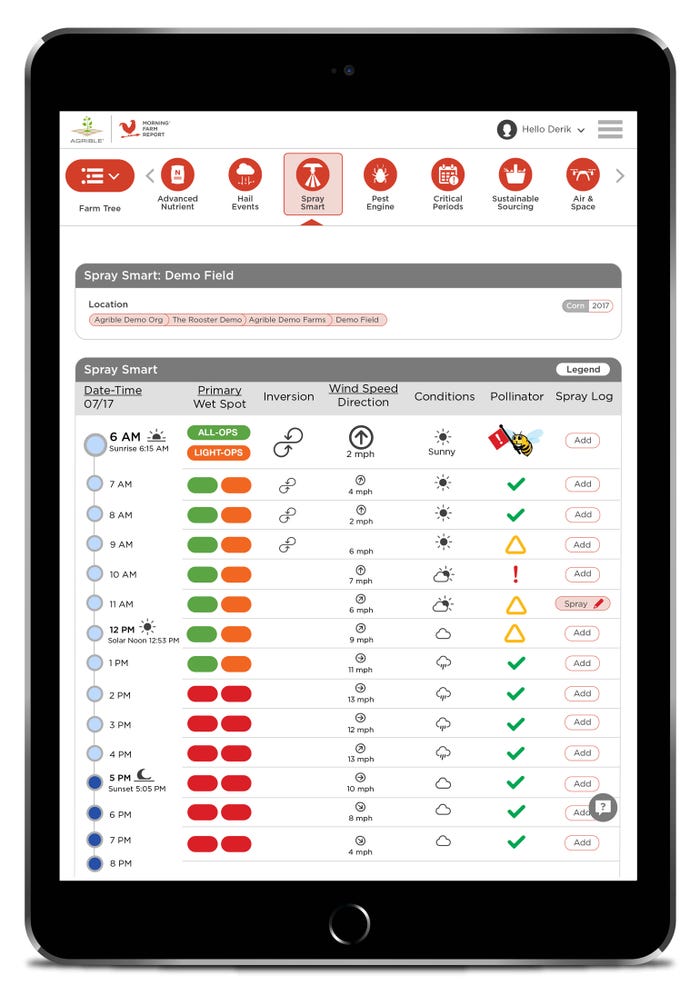
Wind speeds. Inversions. Rain. How hard is it to apply XtendiMax, Engenia or FeXapan within label requirements when weather conditions are a factor? “It’s a challenge,” says Bill Turner, atmospheric scientist with Agrible. Application guidelines state the new in-season dicamba products should be applied when wind speeds are between 3 and 10 mph. Turner calculated wind speeds near Agrible’s headquarters in Champaign and then looked at fields in other areas of Illinois, Indiana, Iowa and Ohio.
“Over the last three months, ignoring the inversion factor, there were 10 to 15 days where wind speeds fell within the recommended 3 to 10 mph window,” says Turner. Wind speed results were consistent across the states, he adds.
Did inversions add to the complications? “In the Midwest, conditions are favorable for an inversion every night, pending certain factors,” Turner notes. “It’s a natural thing that happens almost every night.”
Inversions can impact small sections of fields, or they can cover an entire state. “It depends on the strength of the inversion area,” he adds.
What factors should farmers note before applying herbicides? Hot, sunny days that allow energy to build on the earth’s surface are the first inversion factor, Turner explains. “The earth breathes at night and radiates all that energy back out. Higher winds overnight mix the air near the earth’s surface and decrease the strength/presence of an inversion, but when the opposite happens, low overnight winds can be a big problem.”
A strong inversion is born.
Thick morning fog is a good indication that an inversion occurred overnight. “Strong inversions can go for miles,” he notes. “That fog can drift a long distance.”
Turner says application decisions based on weather conditions and forecasts are not black and white when farmers factor in all of the label requirements.
“Growers need a tool to forecast and plan out their operation so they can spray with confidence,” he notes.
Agrible’s Pocket Spray Smart tool offers real-time data and indicates inversion risk, atmospheric conditions, wind direction and wind speed for the next 72 hours. During questionable wind-speed days, Turner says Pocket Spray Smart helps identify windows when wind speeds fall within label requirements.
The Spray Smart tool was designed to give growers and applicators a forecast of spray conditions, and doesn’t go back in time and show when inversions occurred or trace past wind speeds to help resolve disputes.
For now, farmers can log weather data and conditions during herbicide, fungicide or insecticide applications with the operations notes tool in Morning Farm Report, Agrible’s farm management software.
 POCKET SPRAY SMART: Agrible’s Pocket Spray Smart tool offers real-time data for inversion risk, atmospheric conditions, wind direction and wind speed for the next 72 hours.
POCKET SPRAY SMART: Agrible’s Pocket Spray Smart tool offers real-time data for inversion risk, atmospheric conditions, wind direction and wind speed for the next 72 hours.

About the Author(s)
You May Also Like




